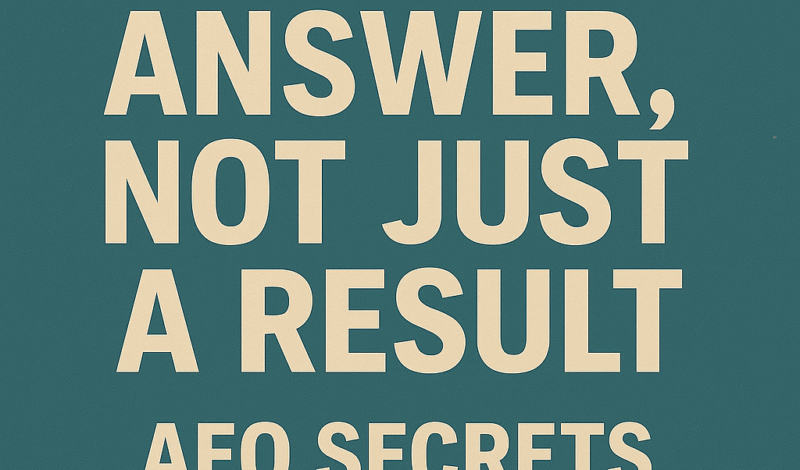The SEO game is evolving—fast. And in 2025, it’s not just about ranking #1 anymore. It’s about being the answer. As search engines become more conversational and intent-driven, traditional SEO is giving way to a smarter, more nuanced approach: Answer Engine Optimization (AEO).
If you want your brand to stand out this year, here’s the truth: You need to stop chasing clicks and start fulfilling queries.
What Is AEO—and Why Should You Care?
Answer Engine Optimization is about structuring your content to directly answer user questions, not just match keywords. This aligns with how AI-powered systems like Google’s SGE (Search Generative Experience), Bing Chat, and voice assistants process and surface content. AEO is not about being part of the conversation—it’s about leading it.
The 2025 Shift: From Keyword Rankings to Knowledge Graph Authority
Search engines no longer just crawl web pages—they understand them. They contextualize your content through:
-
Entities and relationships (linked data)
-
Structured data/schema markup
-
Contextual relevance and topical depth
To win in 2025, your content must become part of the knowledge graph. That means aligning your brand, people, and offerings with what search engines already know—and enhancing it.
5 Secrets to Dominating AEO in 2025
1. Optimize for Questions, Not Queries
Use tools like Also Asked, People Also Ask (PAA), and forums like Reddit to find the real questions your audience is asking. Create content that answers:
-
The immediate question
-
Related sub-questions
-
The “next question” in the user journey
Pro tip: Structure answers with summaries, bullet points, and expandable detail. Think like a chatbot.
2. Schema Markup Is No Longer Optional
In 2025, structured data is your content’s passport to visibility. Implement:
-
FAQPage,HowTo, andQAPagefor clear answers -
Product,Organization, andPersonfor brand visibility -
Speakablemarkup for voice search readiness
Google is favoring rich snippets, AI-generated overviews, and featured answers powered by schema. If you don’t feed it structure, you won’t be part of the answer.
3. Leverage First-Party Expertise
Google’s EEAT (Experience, Expertise, Authoritativeness, Trustworthiness) is tightening. AI can generate surface-level answers, but human-authored insights, case studies, and real-world experience still win trust.
Highlight:
-
Author bios with credentials
-
First-person stories and testimonials
-
Original data and research
4. Create Content for Machines and Humans
Balance readability with machine clarity. That means:
-
Semantic HTML (use
<section>,<article>, etc.) -
Logical heading structure (H1 > H2 > H3)
-
Lists, tables, and summaries for fast comprehension
The goal is dual: be instantly understandable to algorithms and deeply valuable to humans.
5. Build Your Answer Ecosystem
Don’t think of pages—think of clusters. Map out question trees around topics you want to own. Interlink with intent-based anchors like:
-
“Related questions”
-
“Learn more about this”
-
“What’s next?”
Make your site a living knowledge base—a destination, not just a detour.
The AEO Mindset: Be Useful First
In 2025, users—and search engines—aren’t looking for more content. They’re looking for better answers. Your brand needs to act like a mentor, not a megaphone.
Ask yourself:
-
What unique insight do I offer?
-
Does my content solve the user’s problem?
-
Am I showing up where and how users ask?
Final Word: The Future Belongs to the Helpful
Being the answer means showing up in AI snapshots, voice searches, smart assistants, and featured snippets. It’s not about being seen, but about being selected. And in a world of infinite information, selection comes down to one thing: usefulness.
So in 2025, don’t just optimize for search—optimize for solutions.
Ready to become the answer in your niche? Let’s talk content strategy, structured data, and smart visibility. The future’s asking—you just need to answer.




